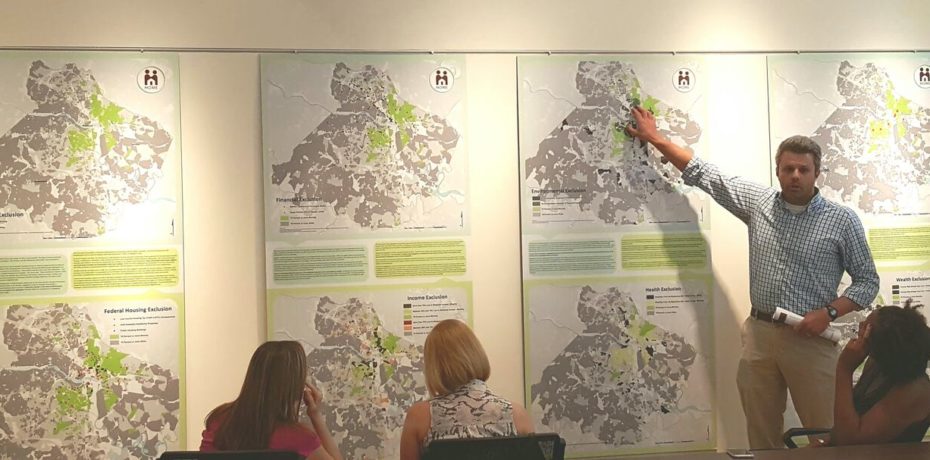Whether you live in the Upper Fan or in East Henrico, you likely have much more in common with your neighbors than a zip code.
The racial and socioeconomic divides within Greater Richmond find bold visual expression in Excluded Communities, a spatial analysis and exhibit launched by Housing Opportunities Made Equal (HOME) to illustrate the ongoing segregation of our communities.
As HOME’s research and policy analyst, Brian Koziol is intimately familiar with the forces behind these divisions and their cyclical impact on the area’s entire population. “Two-thirds of everybody in our region live in a segregated community, either white or minority. And that’s problematic for all of us,” he notes.
HOME’s maps show us how generations have been impacted – and continue to be impacted – by inequitable policies and unjust institutional practices. Building upon the history HOME explored in a 2012 exhibit, called Mapping RVA, which detailed the role that financial and government agencies have played in molding the residential landscape we know today, this latest mapping project further investigates the variables that continue to shape our neighborhoods. In the process, Excluded Communities reminds us that it’s no accident that residential areas of Greater Richmond remain largely heterogeneous.
Geographically removed from resources that enhance quality of life and future prospects – mainstream lending institutions, transportation, environmental safety, and robust educational opportunities – low-income and minority residents continue to struggle against odds stacked against them by limited housing options and unequal access to the means for mobility. HOME gleaned data from such sources as the Virginia Department of Health and the Environmental Protective Agency to highlight the mechanisms that perpetuate poverty and segregation. The maps demonstrate that predatory lenders, for example, are concentrated in lower income areas, while high-performing public schools remain out of reach for much of the same population. Physical well-being also suffers from lack of access to resources, as HOME’s Health Exclusion map reveals through a graphic comparison of healthy life expectancies in different neighborhoods.
Excluded Communities provides a visual perspective of the challenges we all share and the very different circumstances under which we face them. And, as Koziol points out, the boundaries serve none of us well in the long run.
“There are huge disparities based on where we live that have been created by institutional forces and are exasperated by continued segregation of communities,” he explains. “People living in hyper-segregated white communities aren’t interacting with anybody but people like them. Then it becomes a sociological issue of fear.”
Currently on display at the Valentine Museum, Mapping RVA will continue to move to various venues throughout Richmond as a way to help identify community exclusion across the region. Visit www.HOMEofVA.org to see the exhibit and learn where it will be on display in the future.

